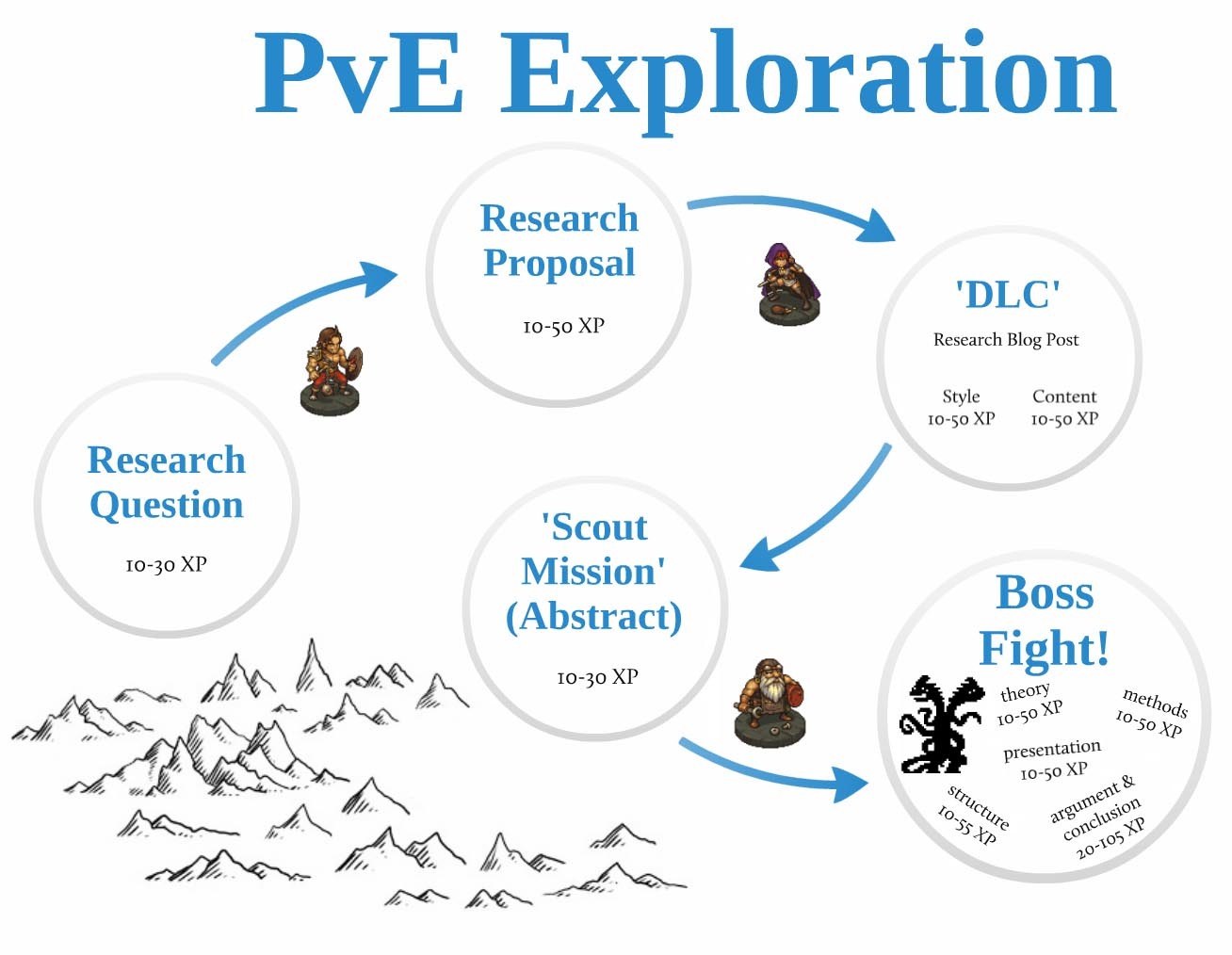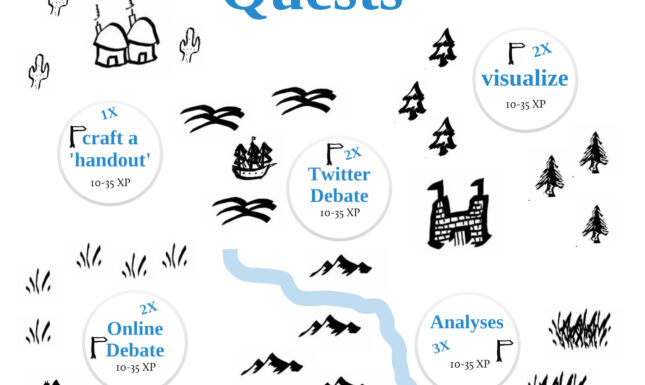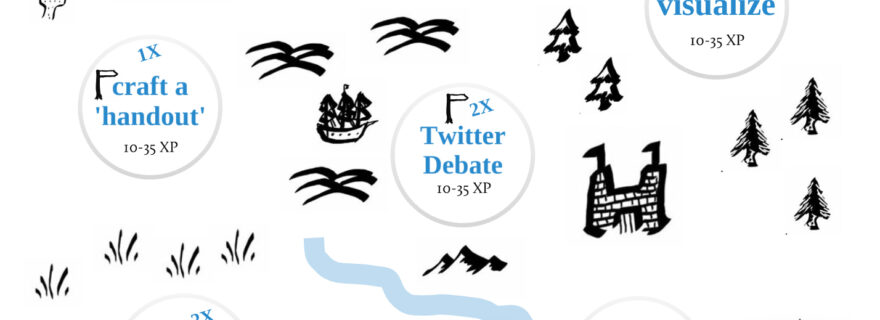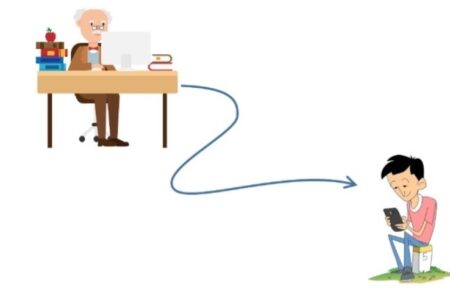Gamification: Turning Higher-Education into a Game – Four lessons… and a caveat
What does it mean to leverage the mechanics of games in higher education? Can instructors fruitfully use lessons from games to inspire engagement in their courses? In this blog post Florian Schneider discusses his experiences gamifying a graduate seminar in Asian Studies and offers practical advice.
Since 2016, I have been running a course for MA Asian Studies students that works a bit differently than a normal seminar. In this course about ‘The Politics of Digital East Asia’, participants do not simply hand in assignments, they complete quests. Instead of a term paper, they engage in a series of challenges that lead up to a ‘boss fight’. And they receive an ‘extra life’ in case they fail at that final challenge. All throughout, they don’t receive grades on the usual 10-point scale, they gather experience points (XP).
This kind of approach is called gamification. Gamifying something means taking elements familiar from videogames, table-top games, and sports, and then applying them to a context that isn’t a game, such as higher education. Proponents of gamification are often enthusiastic about its potential. Jane McGonigal, in Reality Is Broken, makes the case that gamification will ‘fix our educational system’. And Michael Matera, in his book Explore Like a Pirate, expresses the hope that gamified courses will ‘create a New World of learning’.
Such enthusiasm is understandable. Most gamers are willing to immerse themselves for hours on end in their medium of choice. All the while, they learn rules, stratagems, and game lore, they interact, compete, and collaborate, and they hone their skills to often astounding levels of mastery (just watch some of the top videogame speed runs on Youtube to get a sense of such mastery). If educators could harness the attraction of games and apply the exhilarating power of the gameplay loop to their teaching, could they not inspire the same level of dedication among their students?
While matters aren’t necessarily as straightforward as optimists like to proclaim, the promise of gamification is certainly enticing. In what follows, I will discuss four lessons I have learned from gamifying my higher-education course, and I will conclude with important caveats. I will keep discussions of the design choices to a minimum, but should you be interested in learning more about gamified mechanics, be it point systems or mini-games, achievement badges or avatars, I can recommend Lee Sheldon’s excellent book The Multiplayer Classroom.
Four lessons from gamified teaching
At first glance, gamified learning seems to be an example of a ‘reskin’: a superficial change that merely swaps out surface-level features without creating a meaningful impact. Sure, I can label my course grades ‘levels’, my assignments ‘quests’, and the final term-paper a ‘boss fight’, but what does that change? To truly capitalize on the promises of gamification, it is not enough to simply change the vocabulary of teaching; we need to take the gamic experience seriously and ask what makes concepts like XP and quests so tantalizing.
As humans, we enjoy games for reasons too numerous to list in full here. For extensive discussions, I can recommend the introductory chapter of Tracy Fullerton’s Game Design Workshop or (for a classic treatment) Huizinga’s influential book Homo Ludens. Here, I want to focus on four game characteristics: gameplay loops, failure conditions, feedback processes, and player freedom. Each, as we will see, has important implications when translated to teaching environments.
1. The gameplay loop
One of the reasons games hold our attention so well is that they provide a manageable set of tasks that lead to a clear sense of achievement. Once a task is completed (successfully or not), players move on to the next task. And the next. And so on. All the while, they build a sense of progress, leading up to a final moment of (hopefully) gratifying completion.
Gamified teaching tries to emulate this experience by breaking larger tasks down into manageable components and assigning each a clear reward. For instance, a long-term task, such as completing a research project, would become a task list: formulating a research question, designing the research proposal, reflecting on the methodology, conducting different parts of the analysis, etc. Each step yields a certain amount of experience points (say: up to 50 XP), so learners receive regular milestone rewards while developing a clear sense of progression.


Of course, breaking down tasks is a time-honoured tradition in pedagogy and is not unique to gamified course content. Behavioural psychologists have long outlined how step-by-step learning can help make ‘higher-order tasks’ less daunting. Gamified approaches take these lessons to heart, then add to them by creating a clear and transparent system of achievements: the experience point system. But what does such a system achieve, compared to regular grading? Well, it provides a different sense of success and failure.
2. Leaning into failure
A crucial lesson that games teach, is that failure does not have to be the end. If we lose at play, we simply start over. The consequences of failure are usually mild. Some games are even built around the realization that frequent failure can make the prospect of eventual success exponentially more rewarding. Videogames like FromSoftware’s Dark Souls series are an example of such design – despite the relentless failures, players keep coming back for more.
Changing a course-grading system from regular grades to a pool of slowly increasing points emulates this sense that every activity contributes to growth. Importantly, gamified systems go even further than merely awarding points for success; they frequently award a small number of points for failures as well. If participants give a task a try, they automatically receive a minimum XP amount, for instance ten points, regardless of the overall outcome. This matters: even failure is accompanied by a small reward, letting learners know that all experiences are valuable.
But are such automatic awards sufficient to change attitudes towards success and failure? If the stakes for receiving points are set high, then awarding a minimum number of points will serve only as a hollow consolation prize. Imagine a course that contains 1,000 points, with each 100-point bracket ultimately correlating with a grade point (so: 1,000 points equal a 10 out of 10, 900 points lead to a 9 out of 10, and so on). In such a scenario, failing a task and only gaining 10 instead of the maximum 50 XP still means losing almost half a grade point. This hardly inspires a sense of accomplishment.
That is why gamified course designs tend to include two mechanics that work against such outcomes. The first is a modular design that allows course components to compensate for each other. Mechanically, this means that the course offers a pool of points that is larger than merely the points necessary for scoring the highest grade. To stick with the example: while the final grading scale might translate 1,000 points to a grade of 10, the course itself contains enough tasks to add up to 1,250 points. If students fail a series of tasks, they can make up for this by completing more tasks. And students who perform exceedingly well have the option to drop tasks, in the full knowledge that they have already raked up the points they need for the grade they’ve aimed for. This freedom of choice is crucial to the gamified approach, as it empowers learners to take responsibility for their own performance.
The second mechanic gives participants additional chances to improve on previous work. For practical reasons, it may not be possible to implement such second chances for all assignments, but larger tasks usually lend themselves to repeated attempts. Is this then not the same as merely allowing a resit for a failed course component? Well, not quite. Reworking previous attempts remains, like all tasks, optional. What is more, much hinges on the feedback that learners receive for such repeat work.
3. Ditching feedback for ‘feedforward’
One of the problems with feedback is that it usually occurs after tasks have already failed, which triggers all manner of unhelpful emotional responses. In games, feedback is a constant part of the gameplay loop. Players learn from their actions what works and what does not, and they immediately have the chance to employ those insights.
In pedagogy, this is known as ‘feedforward’. Feedforward is a constructive commentary that is future-oriented and that creates actionable chances for improvement. Gamified learning takes this idea of feedforward and implements it in two ways: first, by continuously providing constructive comments as participants move through a series of tasks; second, by giving learners the chance to return to these tasks and improve on them. For instance, participants in my own course complete a term paper. They receive a list of potential achievements beforehand, outlining how they can earn points: up to 10 XP for a good research question; up to 20 XP for clear and engaging writing; up to 20 XP for presenting an appropriate methodology; and so on. After submission, a participant might have received only 3 XP for that research question, 10 for their writing, and 5 for the methodology. But based on the feedback and the clear allocation of points, they can now decide whether (and how much) they want to rework their paper. Going over the writing mistakes has the potential to produce 10 more points. Beefing up that methodology could yield 15 more. And so on.
Again, any such work is optional: if participants are happy with their score, and with the grade it later implies, then they don’t have to revisit their work. But they are empowered with the knowledge of what they need to do should they wish to improve, and they have the freedom to decide whether to act on that knowledge.
4. Engagement styles: designing for diversity
Such freedom has additional implications. If designed a certain way, a gamified course setup offers participants the freedom to find their own pathways to learning. Games cater to diverse preferences for engagement. As Hunicke and her colleagues have argued, our interactions with games can be broken down into different preferences, each speaking to a different kind of sensibility: some games appeal because of their visual, acoustic, or tactile characteristics (what they call sensation), others provide a sense of contest (challenge), yet others generate a sense of gratification through exploration of the unknown (discovery), and so on. Hunicke and her co-authors outline eight such ‘gamic aesthetics’, and I can recommend reading the original paper for a full discussion.
Important here is that such different propensities to inspire can translate to our learning environments. In some instances, an aesthetically pleasing video presentation provides just the right sensual engagement to facilitate learning. In other cases, learners might benefit from the chance to express themselves or collaborate, or venture out to make their own discovery. In some cases, even a rote activity like writing the same Chinese character over and over can be profoundly satisfying, especially when it leads to a clear achievement. Creating a gamified course is then about providing learners with the freedom to choose the engagements that appeal to their own learning styles.
In practice, this means designing diverse sets of optional challenges. In my own course, students can choose to complete analytical tasks that push them to try a specific research methodology; they can opt into visualization exercises, which ask them to create diagrams and infographics of complex processes; they can join online and social media debates. Each group of tasks engages different skills and preferences. And, because the punishment for failure is so low, participants have an incentive to experiment with tasks they might not normally have chosen.


The dark side of gamification, or: should we gamify higher-ed?
There is much to commend gamified teaching, and yet we should be careful about the kind of hyperbolic commentary that at times accompanies such practices. Fans of gamification are often exceedingly positive about the ability of gamic mechanics to motivate and inspire. Some believe that we should gamify all aspects of our lives. McGonigal, for instance, argues that this would ‘optimize human experience’, potentially even allow humanity to ‘tackle global-scale problems like climate change and poverty’.
I have my doubts, especially since the reality of gamification is not this rosy. Game mechanics can be manipulative, and they are frequently used to exploit. Employers use gamification to optimize worker productivity, advertisers push gamification to attract consumers, governments try to entice citizens into compliance through gameplay loops, and education systems use them to nudge students towards higher levels of efficiency. Gamification is intimately tied to the neoliberal project to optimize everything (usually in the interest of profit), which is why critic Ian Bogost has called it ‘bullshit’.
Are my attempts to gamify my MA seminar then also a sinister attempt at manipulating students rather than empowering them? Am I socializing them into being cogs in the machinery of neoliberal capitalism?
These questions are not rhetorical, and I am not trying to be facetious: these are serious concerns. Still, I remain carefully optimistic that a gamified course can work against the broader risks that gamification poses to our societies. Here is why: it provides participants with a carefully designed experience of what it is like to function within a complex system of pressures and incentives. In fact, my last course session asks students to debate the benefits and drawbacks of gamification, and past participants have eloquently unpacked in online discussions how gamic experiences can be political and what they can teach us about complex socio-economic systems in Asia.
Now, these are topics that fit neatly into a course on the Politics of Digital East Asia, but I would make the case that they connect with almost any higher-education topic, especially in the arts, humanities, and social sciences, which are constantly confronted with the tension between human agency and complex systems of power. If we want students to learn what it is like to be caught in the net of such complex structural pressures, then few experiences promise to provide quite as revealing an object lesson as a game.
© Florian Schneider and Leiden Teachers Blog, 2022. Unauthorised use and/or duplication of this material without express and written permission from this site’s author and/or owner is strictly prohibited. Excerpts and links may be used, provided that full and clear credit is given to Florian Schneider and Leiden Teachers Blog with appropriate and specific direction to the original content.





